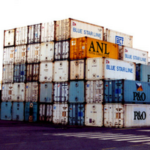What future role for CSDs in blockchain post-trade environment?
| 05-04-2018 | Carlo de Meijer |
 Blockchain technology enables real-time settlement finality in the securities world. This may mean the end of a number of players in the post trade area. For a long time, central securities depositories (CSDs), as intermediators in the post-trade processing chain, were expected to become obsolete. CSDs, but also other existing players in the post-trade environment, are however changing their mind on these new technologies and on their future position in the blockchain world. Increasing regulation, legacy systems and costs pressures, are drivers for CSDs to at least embrace some aspects of blockchain. They are increasingly considering them as enabler of more efficient processing of existing and new services, instead of a threat to their existence. It is interesting to see that some of these actors – who could be potentially big losers in a distributed ledger technology (DLT) or blockchain system – are open to innovation with blockchain and willing to invest in DLT. Last January SWIFT and seven CSDs worldwide agreed on a Memorandum of Understanding to explore the use of blockchain technology in the post trade process esp. e-proxy voting.
Blockchain technology enables real-time settlement finality in the securities world. This may mean the end of a number of players in the post trade area. For a long time, central securities depositories (CSDs), as intermediators in the post-trade processing chain, were expected to become obsolete. CSDs, but also other existing players in the post-trade environment, are however changing their mind on these new technologies and on their future position in the blockchain world. Increasing regulation, legacy systems and costs pressures, are drivers for CSDs to at least embrace some aspects of blockchain. They are increasingly considering them as enabler of more efficient processing of existing and new services, instead of a threat to their existence. It is interesting to see that some of these actors – who could be potentially big losers in a distributed ledger technology (DLT) or blockchain system – are open to innovation with blockchain and willing to invest in DLT. Last January SWIFT and seven CSDs worldwide agreed on a Memorandum of Understanding to explore the use of blockchain technology in the post trade process esp. e-proxy voting.
Where do CSDs stand now?
Complex and fragmented post-trade infrastructure
The current post-trade infrastructure is highly complex and fragmented, crowded with intermediaries, and dealing with outdated legacy systems and technologies. Much of the complexity and fragmentation of the post-trade world is the result of the various participants (custodians, issuers, registrars, CSDs) holding their own, separate ledgers in order to carry out the processes. Consequently, they spend much time and resources on reconciliation and risk management, in order to ensure that transactions can be (and are) appropriately carried out. The completion of securities transactions is as a result a costly and risky business. This has important consequences, efficiency-wise.
Situated at the end of the post-trading process, CSDs are systemically important intermediaries. In the post-trade process the CSDs play a special role both as a depository, involving the legal safekeeping and maintenance of securities in a ‘central depository’ on behalf of custodians, in materialised or dematerialised form; and for the, involving the issuance of further securities by issuers, and their onboarding onto CSDs’ platforms.
Is there a future for CSDs in a disruptive blockchain world?
Blockchain: disruption in securities post-trade
DLT has the potential to heavily disrupt existing post-trade processes in financial services, impacting the business model of a number of intermediaries. This raises significant questions for the present actors in the post-trade world as their role may change dramatically or even disappear. For some actors in the post-trade world, DLT could completely replace their businesses or even make them obsolete. And others should question what will be their added-value within future DLT services.
With blockchain, that is linking trading partners directly, everything will be in place in the ledger at the time of the transaction. Institutions will no longer have to maintain their own databases in the future with DLT, as there will be only one database for all participants in the transaction.
With DLT, all of the complex systems and processes to transfer cash and equities from one account to another are not required. Everything can be embedded into the blockchain. Buyers and sellers can match transactions in seconds and all parties are aware a transaction has been done. This will heavily ease the reconciliation process. Blockchain could ultimately become the standard for financial transactions and real-time settlements, increasing transparency and efficiency in a highly fragmented industry.
Read the full article of our expert Carlo de Meijer on LinkedIn

Economist and researcher









